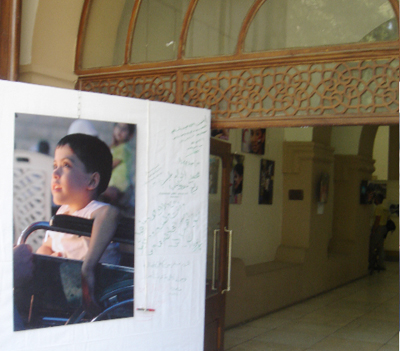Filmmaker Tania Rahkmanova writes on location in Syria during the filming of Iraqi Exodus.
 June 6, 2008: After three days of visiting Iraqi refugee organizations and meeting Iraqi refugee families, I have a day to write and prepare for the shoot that begins tomorrow. The stories of suffering in Iraq and subsequent frustration in Syria pile up, and I feel I need a short break.
June 6, 2008: After three days of visiting Iraqi refugee organizations and meeting Iraqi refugee families, I have a day to write and prepare for the shoot that begins tomorrow. The stories of suffering in Iraq and subsequent frustration in Syria pile up, and I feel I need a short break.
I visited the Syrian National museum where there is a photo exhibition showcasing the work of Iraqi children, sponsored by the Syrian Arab Red Crescent and UNICEF. And, once again, I see these young faces, open and smiling, but there is always something very sad and questioning in the way they look at you.
I enter the main exhibition and turn toward the Roman period. The center of the hall is occupied by a tomb-like monument of a patriarch. Sculpted in pink marble, he doesn’t look too old and has a proud face. He looks down at us from his high pedestal. The monument is not dated. I turn to an old Arab man — I don’t know if he is a visitor or an employee here — to ask him if he knows whose tomb this is this and from which period.
The man doesn’t understand my question. He just smiles and looks at the sculpture and turns back to me – “American … Iraq, no?”
I tried to make a photo but it’s forbidden in the museum.
Tania Rahkmanova has made dozens of documentary films on historical and political themes. Iraqi Exodusis her second WIDE ANGLE film — the first was the award-winning Greetings from Grozny. She holds a Ph.D. in applied statistics and has worked as a print and documentary journalist.
